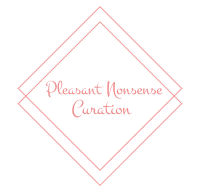Can art shape a political movement? The answer (in short) is that it can, and it most likely will. As a means to expression with a seemingly endless amount of symbolism, the fine arts can shape campaigns, describe political agendas, and inform voters without the often rambling words of campaign speeches. Paintings, sculptures, and photography are a key element to understanding the cultures of different periods, historians examine everything from cartoons to the mediums and materials utilised to understand socio-political norms.


Popular political parties favour distinctive colours (blue and red) and symbols (the lotus and the hand) to represent their interests and political agendas. Hundreds of hours of thought go into the creation and design of these logos, as they represent the belief systems under which political parties function. One example of this could be the lotus which is commonly used an understood as a symbol of purity, rebirth, and enlightenment. Carefully chosen, these images and the medium used to present them can shape a campaign, and avoid faux-pas’ in the future especially in modern meme culture. There are no points for accuracy, however as these symbols often represent how individuals, parties, or even countries would like to be perceived as, as opposed to what they truly stand for.


Colour plays a significant role in our day to day lives. It can have significant psychological effects on individuals’ emotions, cognizance, and even their memory, therefore it comes as no surprise that when a political figure or party chooses their representative colours they intend to send a message. Blue, for example, represents intelligence, serenity, and stability which in turn influences individuals (largely) into emotions associated with being calm. Most importantly, cool colours such as blue have proven to be the best for concentration and recall. Red, on the other hand, represents passion, adventure, and love, however, it is also the colour associated with violence and anger this raises the question, why would colours such overtly negative connotations be chosen? Red is the most attractive and attention-grabbing of the colours, it has the longest wavelength and evocative numerous psychological studies have found that males specifically are highly cognitively aroused by the colour and due to women’s voting rights being withheld for decades it comes as no surprise that red was a historically popular choice in attracting the voting populace.


War and peace have both given rise to extremely different, yet equally distinct political agendas, campaigns, and comics. The weaponisation of people’s fears and desires are a common theme amongst them, in times of war we call for peace and in times of peace, we are on edge wondering if we will go to war. Choosing a leader who aligns with your belief systems, believes in the betterment of society and the environment is just as important as choosing one who represents your taxation interests. The United States general elections are rapidly approaching and I would like to urge you to vote! You can register to vote here, here or here.


-S

